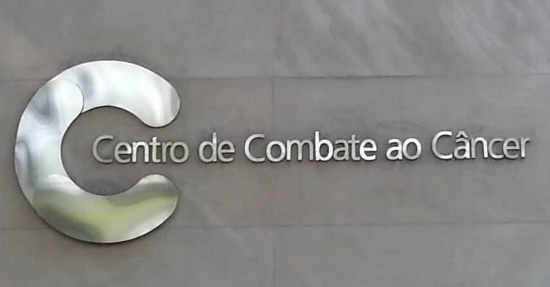Introduction
Bile duct cancer, also known as cholangiocarcinoma, is a type of cancer that forms in the bile ducts,a series of thin tubes that carry bile, a digestive fluid, from the liver to the gallbladder and small intestine. Bile duct cancer can occur in different parts of the bile duct system:
- Intrahepatic Cholangiocarcinoma: Occurs in the bile ducts inside the liver. This type accounts for about 10% of bile duct cancers.
- Extrahepatic Cholangiocarcinoma: Occurs in the bile ducts outside the liver. This type is further divided into perihilar (Klatskin tumor) and distal cholangiocarcinoma, accounting for about 90% of cases.
In the United States, approximately 8,000 people are diagnosed with cholangiocarcinoma each year. The incidence rate is higher in Southeast Asia due to the prevalence of liver fluke infections, which are a significant risk factor. The global incidence of bile duct cancer is approximately 1-2 cases per 100,000 people annually, but in endemic areas, the rate can be as high as 96 per 100,000 people [ESMO Guidelines, 2023].
Treatment strategies for bile duct cancer are complex and require a multidisciplinary approach involving surgery, systemic therapies, radiation, and emerging targeted treatments. This comprehensive guide aims to provide patients and healthcare providers with the most current and detailed information on the treatment of bile duct cancer based on the latest guidelines from the European Society for Medical Oncology (ESMO).
Diagnostic Algorithm
What evaluations do patients undergo to identify the best treatment strategy?
Accurate diagnosis and staging of bile duct cancer are crucial for developing an effective treatment plan. The diagnostic process includes:
- Clinical Examination: A thorough physical examination to check for signs of jaundice, abdominal pain, and palpable masses. The doctor may also evaluate liver function and look for signs of metastasis.
- Imaging Tests:
- Ultrasound: An initial imaging technique to visualize the bile ducts and detect tumors.
- CT Scan and MRI: These provide detailed images of the bile ducts and surrounding structures. CT scans have a sensitivity of about 70-80%, while MRI, especially MRCP (Magnetic Resonance Cholangiopancreatography), offers high-resolution images of the bile ducts.
- PET Scan: Used to detect metastasis and determine the extent of the disease.
- Endoscopic Procedures:
- ERCP (Endoscopic Retrograde Cholangiopancreatography): Combines endoscopy and fluoroscopy to diagnose and treat bile duct conditions, with a diagnostic accuracy of around 90%.
- EUS (Endoscopic Ultrasound): Provides detailed images and allows for fine-needle aspiration biopsy.
- Biopsy: Tissue samples obtained during ERCP, EUS, or percutaneous approaches are examined for cancer cells. Biopsy is crucial for confirming the diagnosis.
- Blood Tests: Elevated levels of tumor markers such as CA 19-9 and CEA can indicate bile duct cancer but are not definitive. CA 19-9 is elevated in about 85% of cases [ncbi.nlm.nih.gov].
Treatment Routes
What is an appropriate treatment for different stages of bile duct cancer?
Early-stage treatment
Surgical Resection
Surgery is the primary treatment for early-stage bile duct cancer, offering the best chance for a cure. The type of surgery depends on the tumor's location and extent.
- Intrahepatic Cholangiocarcinoma: Partial hepatectomy, where the affected portion of the liver is removed, is feasible in about 20-30% of cases.
- Perihilar Cholangiocarcinoma: This often involves complex surgical procedures, including bile duct resection, partial hepatectomy, and possibly vascular reconstruction. The 5-year survival rate post-resection can reach up to 40% for patients with negative surgical margins.
- Distal Cholangiocarcinoma: Pancreaticoduodenectomy (Whipple procedure) is commonly performed. This procedure has a perioperative mortality rate of around 5-10% but can offer significant survival benefits when complete resection is achieved.
For selected patients with early-stage hilar cholangiocarcinoma, liver transplantation combined with neoadjuvant chemoradiotherapy has shown promising results, with a 5-year survival rate of approximately 65% [ESMO Guidelines, 2023].
Adjuvant Therapy
Chemotherapy
Postoperative (adjuvant) chemotherapy is recommended to eliminate any remaining cancer cells and reduce the risk of recurrence. The standard regimen includes capecitabine, administered for 6 months. Studies have shown that adjuvant capecitabine improves overall survival and disease-free survival compared to observation alone.
Locally advanced and unresectable cancer
Radiation Therapy
Radiation therapy is often used as an adjunct to surgery or as a palliative treatment in patients with advanced disease who are not candidates for surgery.
- External Beam Radiation Therapy (EBRT): Uses high-energy rays to kill cancer cells and reduce local recurrence rates post-surgery.
- Brachytherapy: Involves placing radioactive material inside the body near the cancer cells, allowing for higher radiation doses directly to the tumor while sparing surrounding healthy tissues [ncbi.nlm.nih.gov].
Chemotherapy
Systemic therapy can be used as neoadjuvant therapy to shrink tumors before surgery or as the primary treatment for unresectable or metastatic disease.
- First-Line Treatment: The combination of gemcitabine and cisplatin is the standard first-line therapy for advanced bile duct cancer. Clinical trials have demonstrated that this regimen improves median overall survival to approximately 11.7 months, compared to 8 months with gemcitabine alone.
- Second-Line Treatment: For patients who do not respond to first-line therapy, second-line options include FOLFOX (5-FU and oxaliplatin) or CAPOX (capecitabine and oxaliplatin). These regimens have shown to provide a median overall survival of around 6-8 months in the second-line setting [ESMO Guidelines, 2023].
Advanced and metastatic cancer
Targeted Therapy
Targeted therapies are designed to attack specific genetic mutations or proteins that drive cancer growth.
- Pemigatinib: An FGFR2 inhibitor approved for patients with FGFR2 fusions or rearrangements. Clinical trials have shown a response rate of around 35%, with median progression-free survival of approximately 6.9 months.
- Ivosidenib: An IDH1 inhibitor for patients with IDH1 mutations, providing a median progression-free survival of around 2.7 months, with some patients achieving durable responses [bmccancer.biomedcentral.com].
Immunotherapy
Immunotherapy stimulates the patient’s immune system to recognize and attack cancer cells.
- Pembrolizumab: An immune checkpoint inhibitor targeting PD-1, approved for patients with high microsatellite instability (MSI-H) or mismatch repair deficiency (dMMR). This therapy has shown durable responses in a subset of patients, with a median overall survival extending beyond one year in responders [ncbi.nlm.nih.gov].
Palliative Care
Symptom Management
Palliative care focuses on relieving symptoms, improving quality of life, and providing support to patients and their families.
- Pain Management: Effective pain control can be achieved through medications (opiods), nerve blocks, or radiation therapy.
- Biliary Drainage: Procedures such as ERCP with stent placement or percutaneous transhepatic biliary drainage (PTBD) can relieve biliary obstruction and alleviate symptoms like jaundice and itching.
- Nutritional Support: Nutritional support is essential for managing weight loss and malnutrition. This can include dietary modifications, supplements, or enteral feeding.
Clinical Trials and Future Directions
The treatment landscape for bile duct cancer is rapidly evolving, with numerous clinical trials investigating novel therapies and combination strategies. Areas of active research include:
- Combination Therapies: Trials are exploring the efficacy of combining chemotherapy with targeted therapy or immunotherapy to enhance treatment responses and improve survival outcomes.
- Novel Targeted Agents: Investigational drugs targeting specific genetic mutations, such as BRAF and HER2, are being evaluated for their potential to improve outcomes in patients with these alterations.
- Personalized Medicine: Advances in genomic profiling are enabling more personalized treatment approaches, tailoring therapies based on the molecular characteristics of each patient’s tumor.
Survival and Follow-Up Care
The prognosis for bile duct cancer varies widely based on the stage at diagnosis and the treatment received. Early-stage bile duct cancer that is resectable has a 5-year survival rate of approximately 30-40%. For advanced, unresectable, or metastatic biliary tract cancer, the prognosis is poorer, with median overall survival ranging from 6-12 months depending on the response to therapy.
Surveillance typically involves imaging and laboratory tests every 3-6 months for the first two years, then annually [cancer.org].


































































































